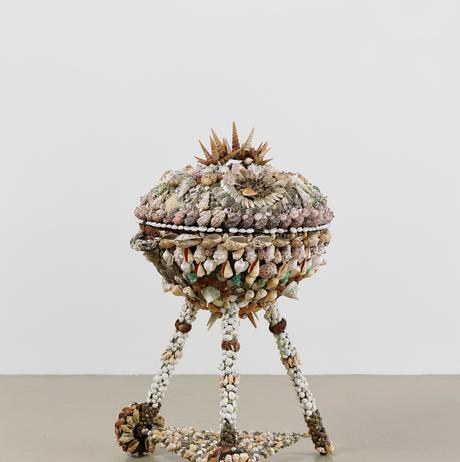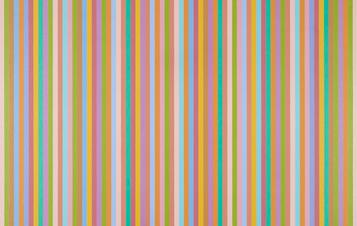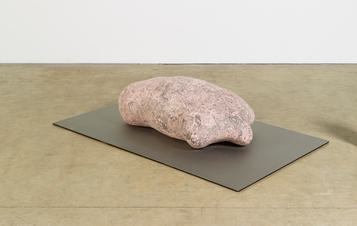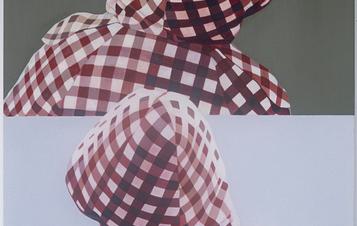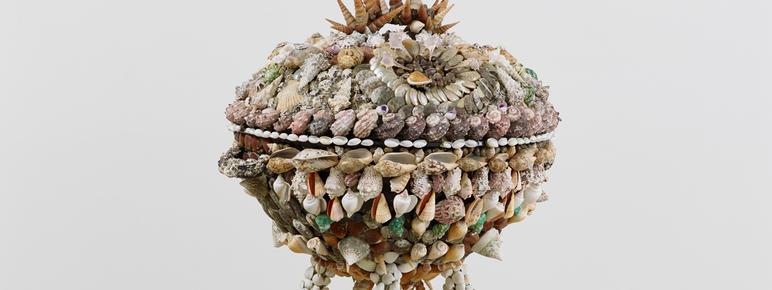
Criminal Ornamentation: Yinka Shonibare CBE curates the Arts Council Collection
– Longside GalleryAbout Criminal Ornamentation: Yinka Shonibare CBE curates the Arts Council Collection
‘Criminal Ornamentation’ is about the refusal of artists to stay away from vulgar ornamentation and obsessive popular repetition of pattern. Cheers to all the criminals!!’ - Yinka Shonibare CBE
Criminal Ornamentation features a number of celebrated artists including Timorous Beasties, Susan Derges, Laura Ford, Ed Lipski, Alexander McQueen, Milena Dragicevic, Lis Rhodes, Bridget Riley, Yinka Shonibare CBE, Caragh Thuring and Bedwyr Williams.
Reflective of Yinka’s own practice, this exhibition in Longside Gallery explores the cultural and social dimensions of the use of pattern in modern and contemporary art. The title of the show is taken from Adolf Loos’ 1908 influential essay ‘Ornament and Crime’. In this essay Loos’ examines the notions of good and bad taste and condemns the use of decoration and craft as an indication of the lowest level of cultural development, to the extent of stating ‘the modern man who tattoos himself is a criminal.’ Yinka Shonibare CBE challenges this notion by saying ‘Adolf Loos was clearly a man of his time in his snobbish revolutionary zeal to abandon ornamentation as he saw it as the pre-occupation of the working classes and degenerates’.
Included in the exhibition are a range of works that Shonibare has chosen to challenge the notion of the ornament as crime. Shonibare looks to embrace colour, ornament and pattern as a means for social and political expression. Acclaimed artist Bridget Riley, for example, uses geometric patterns and repetition within Ecclesia (1985). Operating as more than bands of colour and stripes; Riley creates new shapes and spaces by changing the viewer’s point of perception. Similarly, Andy Holden’s Totem for Thingly Time, 2014, a sculptural piece formed of dripping plaster was made as an attempt to ‘reveal the time of its own construction’. Painter Sean Scully creates an interplay of expansion and restriction through the constant repetition of lines and structures within his work.
Bedwyr Williams’ The Burn, 2012, a shell encrusted metal BBQ, plays with the idea of ‘kitsch’ - highlighting issues surrounding class, taste and snobbery. These themes are also documented in Ron McCormick’s Man by China Stall, 1973, a photograph depicting a man surrounded by decorative pottery that was popular at the time but considered ‘kitsch’ by the elite. These works explore how society’s taste changes over time, and examines the crossover between ornaments, craft and art.
A number of works in the exhibition suggest the diverse potential of abstract patterns within art. As well as acting as decorative pieces, they explore postcolonialism and the strong connection between individuals and society. Bashir Makhoul’s Zigzag, 1992, explores the theme of politics through the use of Islamic pattern; the painting questions ‘western capitalism and the Eastern Oil Empire’. Ardyne Point, 2016, by Caragh Thuring draws inspiration from Holly Loch US Submarine base and a Scottish oil rig yard, using pattern to create a multitude of opportunities for different interpretations.
Comedy is often present throughout the exhibition, Timorous Beasties’ ‘London Toile’ wallpaper for example, portrays a dark sense of humour in its mismatch between form and content. From a distance, the work resembles a traditional chintz pattern, however up close there are many shocking contemporary references including the depiction of a mugging, a seemingly homeless man on a park bench and a recognisable brutalist landmark, the Trellick tower.
Throughout the exhibition it is possible to see evidence of Yinka Shonibare CBE aiming to break down the boundaries of gender association through the use of pattern and fabric. An embroidered evening dress and a metallic clutch bag by fashion designer Alexander McQueen are placed in Criminal Ornamentation alongside other works, blurring the boundaries between high and low art, cheap and luxurious, craft and art.
You might also like
- Art Outdoors

Barry Flanagan: Large Nijinski on Anvil Point
Large Nijinski on Anvil Point by Barry Flanagan has returned to YSP – the sculpture was last on display here in 2009. - Art Outdoors

Nigel Hall: Crossing (Horizontal)
- Art Outdoors

Jem Finer: Longplayer
- News

Robert Indiana for Yorkshire Sculpture Park – A Benefit Print Exhibition
20 February 2024
